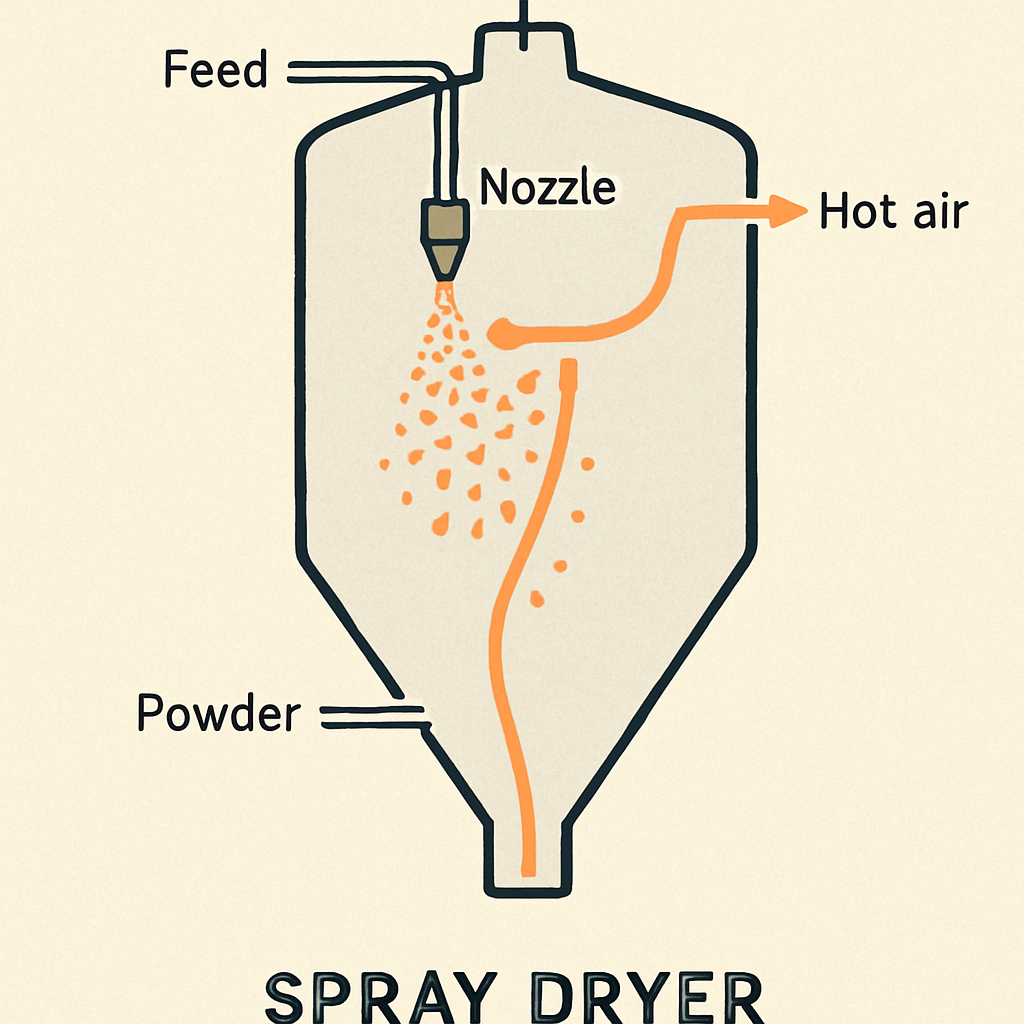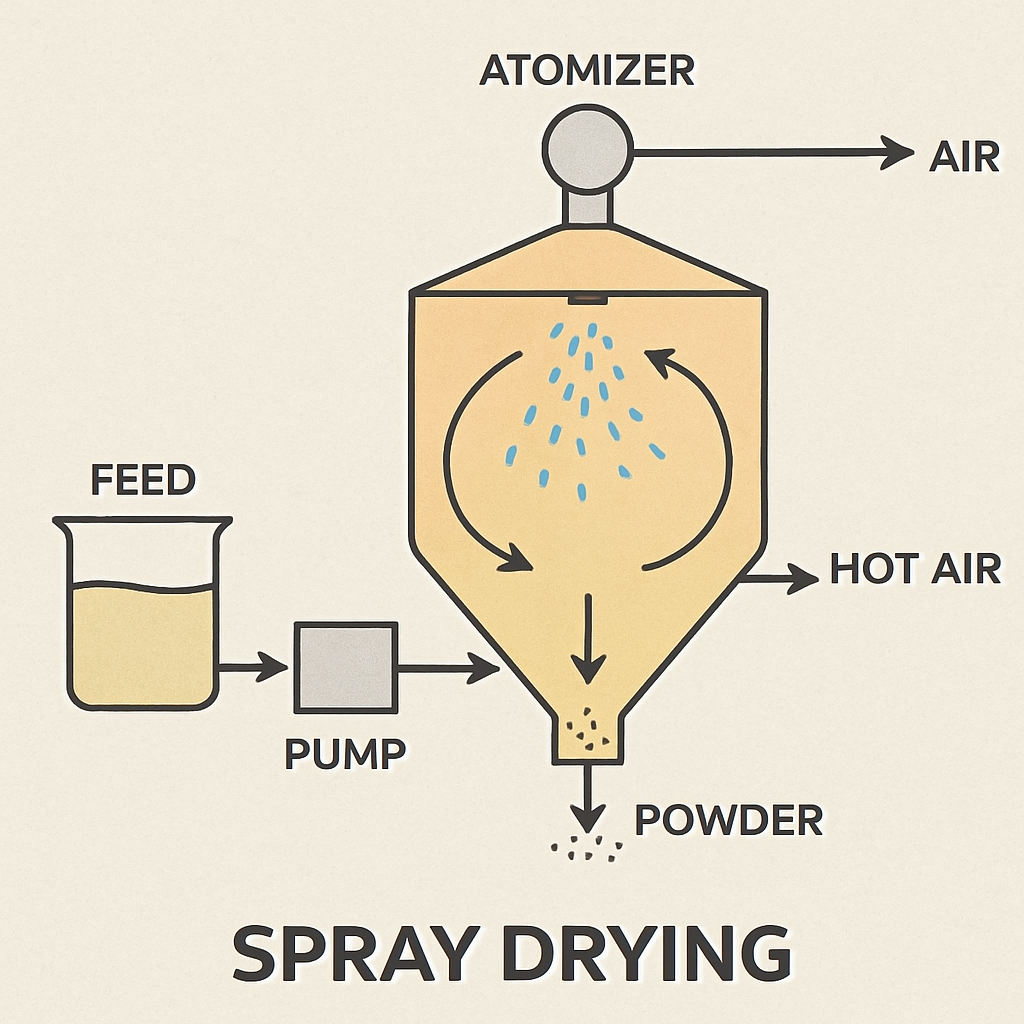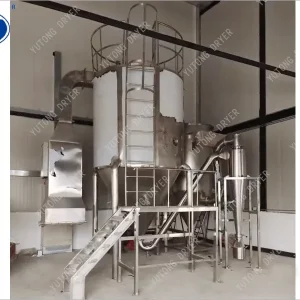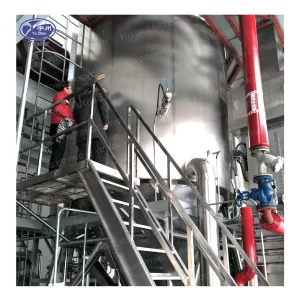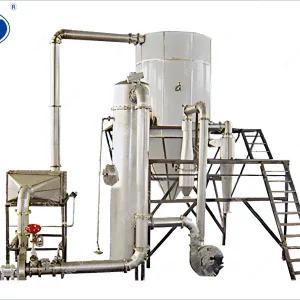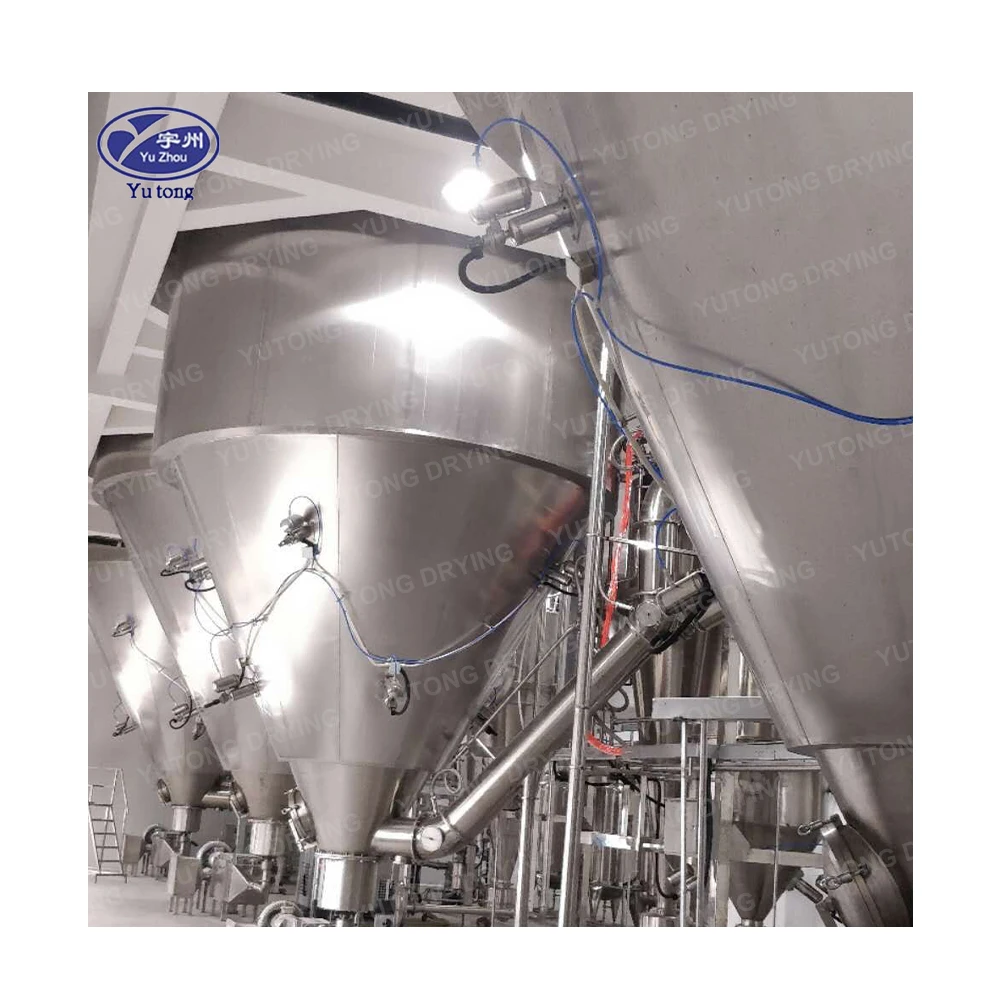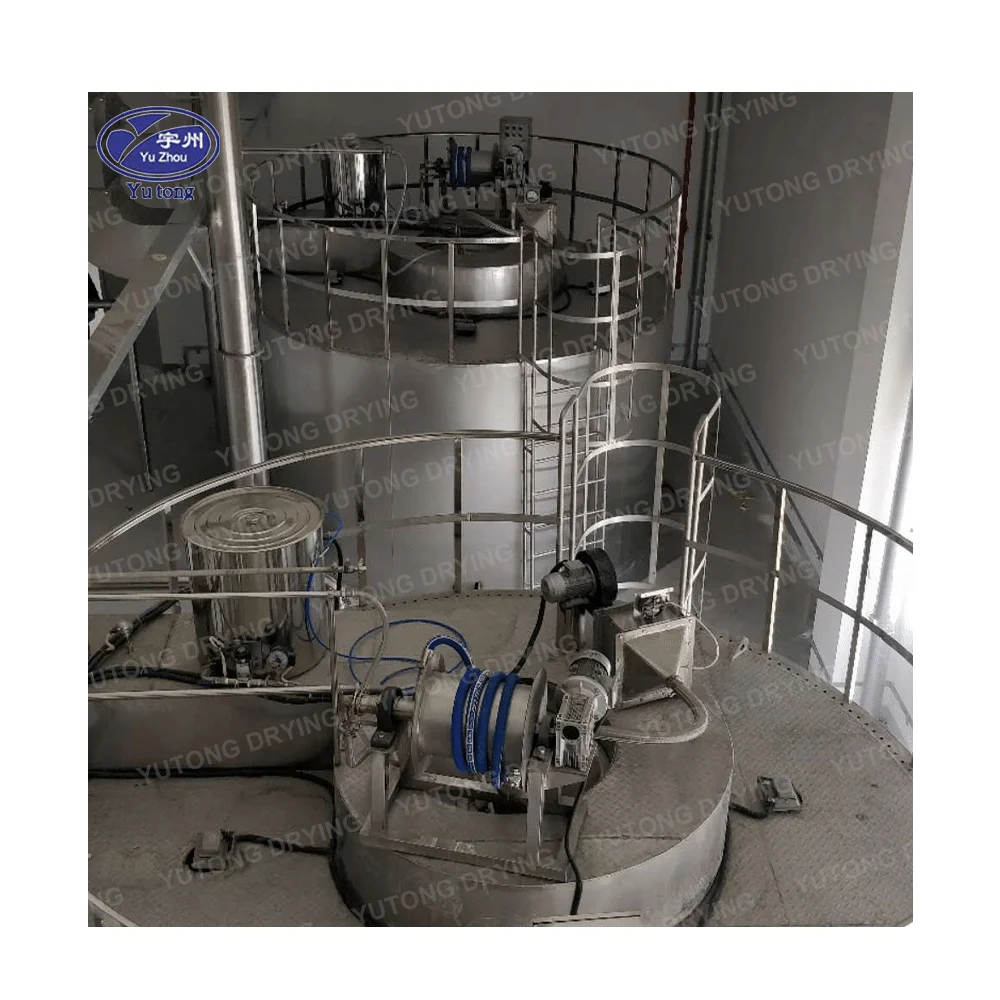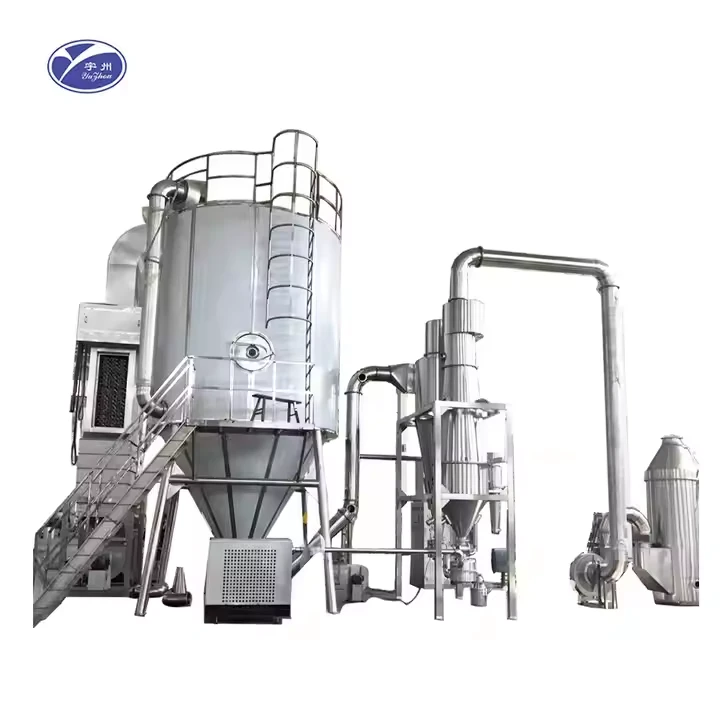Spray drying is a fascinating process that transforms liquid materials into dry powders. Whether you’re a hobbyist, a small-scale manufacturer, or someone curious about industrial processes, understanding how to build a spray dryer can be both an educational and rewarding experience. In this guide, we’ll walk through the basics of what a spray dryer is, how it works, and the steps to build one. This journey will not only equip you with practical skills but also deepen your understanding of the underlying scientific principles.
A spray dryer is a device used to produce dry powders from liquids or slurries by rapidly drying with a hot gas. This method is commonly used in the food, pharmaceutical, and chemical industries for creating products like milk powder, instant coffee, and pharmaceuticals. These industries rely on spray drying for its efficiency and ability to preserve product quality.
The Components of a Spray Dryer
The main components of a spray dryer include:
- Feed Pump: Moves the liquid feed into the drying chamber. Selecting the right pump is crucial, as it must handle the liquid’s viscosity and flow rate effectively.
- Atomizer or Nozzle: Converts the liquid into a fine mist of droplets. The atomizer’s design and operation determine the droplet size, which affects drying efficiency and final product consistency.
- Drying Chamber: Where the hot air contacts the mist and evaporates the liquid. The chamber’s size and shape influence the residence time of droplets, impacting drying completeness and uniformity.
- Air Heater: Warms the air to the necessary temperature for drying. Temperature control is vital to prevent degradation of sensitive materials and ensure rapid drying.
- Cyclone Separator: Separates the dried powder from the air. Effective separation minimizes product loss and ensures a high-quality powder.
- Aspirator: Helps to draw air through the system and maintain pressure. It plays a key role in ensuring consistent airflow, which is essential for uniform drying.
Importance in Industry
Spray dryers are indispensable tools in various industries. In the food industry, they enable the production of stable, easy-to-store products like milk powder and instant coffee. In pharmaceuticals, they help create uniform powders essential for tablet production. The chemical industry uses spray dryers to create finely powdered chemicals, which improve solubility and reactivity.
Historical Context
The development of spray drying technology dates back to the late 19th century. It revolutionized how industries approached product preservation and storage. Over the decades, advancements in materials and engineering have made spray dryers more efficient, versatile, and accessible. Understanding this history provides insight into the evolution of industrial processes and the ongoing quest for innovation.
Comment fonctionne un séchoir par pulvérisation ?
The spray drying process involves three main stages:
- Atomization: The liquid feed is turned into a fine mist by the atomizer or nozzle. This step is critical because the droplet size affects drying time and product quality. Smaller droplets dry faster, reducing the risk of thermal degradation.
- Drying: The mist enters the drying chamber where it comes into contact with hot air. The heat causes the liquid to evaporate, leaving behind dry particles. The drying air’s temperature and flow rate must be controlled to optimize drying without damaging the product.
- Separation: The dried particles are collected using a cyclone separator, while the evaporated moisture is vented out. Efficient separation ensures product purity and reduces the need for post-processing steps.
The Science Behind Atomization
Atomization is the process of breaking down a liquid into fine droplets, which greatly increases the surface area for evaporation. The type of atomizer used—centrifugal, pressure, or ultrasonic—affects the droplet size distribution. This distribution is crucial for achieving consistent product quality and optimizing the drying process.
Heat Transfer Dynamics
Heat transfer in a spray dryer involves both convection and conduction. As hot air contacts the droplets, heat is transferred, causing moisture to evaporate rapidly. Understanding the heat transfer dynamics helps in designing a system that maximizes efficiency while minimizing energy consumption.
The Role of Airflow
Airflow management is essential in spray drying to maintain consistent drying conditions. Proper airflow ensures that droplets are evenly exposed to hot air, preventing uneven drying and product agglomeration. The aspirator’s role in maintaining this airflow cannot be overstated, as it directly impacts product quality and process efficiency.
Designing a Spray Dryer
When designing a spray dryer, several factors must be considered:
- Capacity: How much liquid you need to process at once. The capacity dictates the size and power requirements of the dryer, influencing both initial costs and operational efficiency.
- Temperature: The appropriate temperature for drying without degrading the product. Each product has an optimal drying temperature range, balancing rapid drying with product integrity.
- Moisture Content: The desired final moisture content of the powder. Achieving the right moisture content ensures product stability and shelf life.
- Size of the Drying Chamber: This will depend on the volume and type of product being dried. A well-sized chamber ensures efficient drying and prevents product loss.
Calcul de la capacité du sécheur par atomisation
The capacity of a spray dryer is determined by the amount of liquid feed it can handle. To calculate this, you need to know the feed flow rate and the evaporation rate.
- Feed Flow Rate: The volume of liquid entering the dryer per unit time. This rate must be matched to the system’s ability to process the liquid, ensuring continuous and efficient operation.
- Evaporation Rate: The amount of moisture removed per unit time. Understanding this rate helps in designing a system that meets production needs without overburdening the dryer.
By balancing these two factors, you can determine the spray dryer’s overall capacity. Proper capacity planning ensures the dryer meets production demands and operates efficiently.
Temperature Considerations
Temperature is a critical factor in spray drying, impacting both the drying rate and product quality. Selecting the appropriate drying temperature involves understanding the thermal properties of the product and the heat sensitivity of its components. This ensures rapid drying without compromising product quality or nutritional value.
Chamber Design and Efficiency
The drying chamber’s design influences the efficiency of the spray drying process. A well-designed chamber facilitates even distribution of hot air, minimizes product buildup, and enhances heat transfer. By optimizing these aspects, you can achieve a more efficient drying process and higher product yields.
Building Your Own Spray Dryer
Building a spray dryer at home requires some understanding of mechanical and thermal processes, as well as basic engineering skills. Here are the steps to create a small-scale spray dryer:
Step 1: Gather Materials
- Small Pump: To feed the liquid into the system. Choose a pump that can handle the specific viscosity and flow rate of your liquid feed.
- Nozzle or Atomizer: To create a mist from the liquid. The choice of nozzle affects droplet size and distribution, crucial for effective drying.
- Heater or Heat Source: To warm the air. An adjustable heater allows you to control the drying temperature and accommodate different materials.
- Chamber: A heat-resistant container to serve as the drying chamber. Ensure the chamber is properly insulated to maintain consistent temperatures.
- Fan or Aspirator: To circulate air through the system. A reliable fan ensures steady airflow, which is critical for uniform drying.
- Cyclone Separator: To collect the dried product. A well-designed separator minimizes product loss and ensures a clean, high-quality powder.
- Piping and Tubing: For connecting all components. Ensure all connections are airtight to prevent leaks and maintain system efficiency.
Step 2: Assemble the System
- Install the Pump: Attach the pump to the liquid feed source. Ensure the pump is securely mounted and capable of maintaining consistent feed rates.
- Connect the Atomizer: Attach the atomizer to the pump outlet to spray the liquid into the chamber. Proper positioning ensures even distribution of droplets within the chamber.
- Set Up the Heating System: Position the heater to blow hot air into the drying chamber. Ensure the heater’s output is compatible with the chamber’s size and the desired drying rate.
- Attach the Cyclone Separator: Connect the chamber outlet to the cyclone separator to collect the dried powder. Ensure the separator is properly sealed to prevent powder loss.
- Add the Aspirator: Ensure the fan or aspirator is correctly positioned to maintain airflow. Proper airflow is critical for effective drying and consistent product quality.
Step 3: Testing and Optimization
Once assembled, test your spray dryer with a small batch of liquid. Begin with low-risk materials to avoid damage while learning the system’s intricacies.
- Adjust Temperature: Fine-tune the heater settings to achieve the optimal drying temperature for your material. Monitor the temperature closely to prevent overheating.
- Optimize Airflow: Adjust the fan or aspirator to ensure consistent airflow. Proper airflow prevents uneven drying and product agglomeration.
- Monitor Feed Rate: Experiment with different feed rates to achieve the desired drying efficiency. Balancing feed rate with drying capacity is key to optimal performance.
It’s essential to monitor the process to avoid overheating or under-drying the product. Regular testing and adjustment ensure your spray dryer operates efficiently and produces high-quality powders.
Finding Moisture Content in a Spray Dryer
To find the moisture content of the final product, you can use a moisture analyzer or a simple oven-drying method:
- Moisture Analyzer: Use a specialized device to measure the moisture content quickly. This method provides rapid and accurate results, ideal for frequent testing.
- Oven-Drying Method: Weigh a sample, dry it in an oven at a set temperature, and re-weigh it to calculate moisture loss. This method is reliable and cost-effective, suitable for occasional testing.
Importance of Accurate Moisture Measurement
Accurate moisture measurement is crucial for ensuring product quality and stability. Excess moisture can lead to spoilage, while insufficient moisture can affect texture and functionality. Regular moisture analysis helps maintain product standards and optimize drying processes.
Comparing Methods
Choosing between a moisture analyzer and the oven-drying method depends on your needs and resources. Moisture analyzers offer quick results but can be expensive, while oven-drying is more time-consuming but cost-effective. Understanding the pros and cons of each method helps you select the best approach for your operations.
Impact sur la qualité du produit
Moisture content directly impacts product quality, affecting everything from taste and texture to shelf life. By carefully monitoring and controlling moisture levels, you can ensure your products meet industry standards and consumer expectations.
Applications des sécheurs par atomisation
Spray dryers are versatile and used in various industries:
- Food Industry: Creating powdered milk, coffee, and flavorings. Spray drying preserves flavor and nutrients while providing a convenient, shelf-stable product.
- Pharmaceuticals: Drying active ingredients and creating tablets. The precise control offered by spray drying ensures consistent dosage and product efficacy.
- Chemicals: Producing powdered chemicals and detergents. Spray drying improves the solubility and handling of chemical products, enhancing their performance in various applications.
Role of an Aspirator
In a spray dryer, the aspirator plays a crucial role in maintaining airflow and pressure. By drawing air through the system, it ensures that the drying process is consistent and efficient, helping to produce a uniform powder.
- Airflow Management: The aspirator ensures steady airflow, which is essential for uniform drying. Consistent airflow prevents droplet agglomeration and uneven drying.
- Pressure Control: Maintaining the correct pressure within the system is vital for efficient operation. The aspirator helps regulate pressure, ensuring optimal drying conditions.
- Energy Efficiency: A well-designed aspirator reduces energy consumption by optimizing airflow and pressure. This contributes to lower operational costs and a more sustainable drying process.
Industry-Specific Applications
Spray dryers are tailored to meet the specific needs of different industries. In the food industry, they produce high-quality powders that retain nutritional value and flavor. Pharmaceutical applications benefit from precise control over particle size and moisture content, ensuring product consistency. In the chemical industry, spray dryers create fine powders that enhance product performance and usability.
Innovations dans le séchage par atomisation
Recent innovations in spray drying technology have focused on improving efficiency, reducing energy consumption, and enhancing product quality. Advances in atomization technology, heat recovery systems, and process automation have made spray dryers more versatile and cost-effective. Staying informed about these innovations can help you optimize your spray drying operations and remain competitive in the market.
Conclusion
Building a spray dryer can be a challenging yet educational project that offers insights into industrial drying processes. By understanding the components and steps involved, you can create a functional spray dryer for small-scale applications. Whether you’re exploring new methods for preserving food, developing pharmaceutical products, or experimenting with chemical processes, a spray dryer is a valuable tool.
Remember, safety is paramount, so take necessary precautions when working with heat and machinery. Carefully follow safety guidelines to prevent accidents and ensure a successful project. Happy drying!
Ongoing Learning and Experimentation
Building a spray dryer is just the beginning of your journey into the world of spray drying. Continuous learning and experimentation will help you refine your skills and improve your system’s performance. Engage with industry forums, attend workshops, and keep abreast of the latest research to stay informed and inspired.
Community and Collaboration
Joining a community of like-minded individuals can provide valuable support and insights. Collaborating with others allows you to share experiences, troubleshoot challenges, and discover new applications for your spray dryer. Building a network can enhance your learning experience and open up new opportunities.
Future Prospects
As you master the art of séchage par atomisation, consider the potential for scaling up your operations or exploring new markets. The skills and knowledge gained from building and operating a spray dryer can pave the way for future innovations and entrepreneurial ventures in various industries. Embrace the possibilities and continue to push the boundaries of what you can achieve with spray drying technology.

